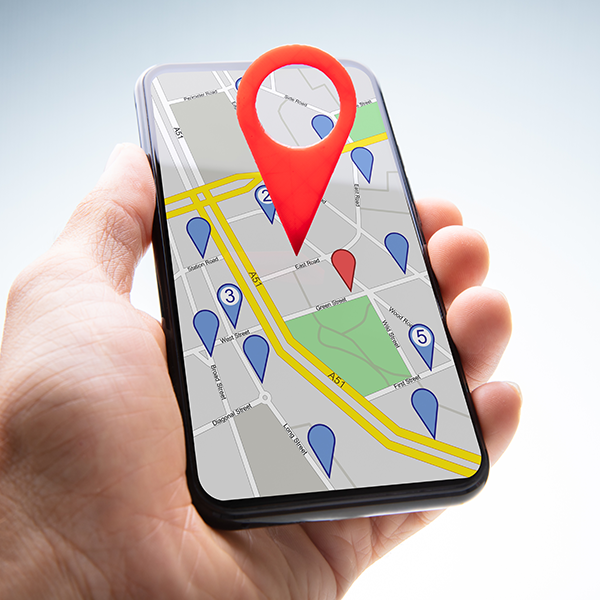How DAM + The Cloud Can Help in Today's Content Hungry World

There's a lot of discussion in the marketing industry today about product companies evolving into media brands - basically, companies are now having to function as both product companies (what they truly are) and content publishers (what they have to be in order to attract the attention of their target customers and sell products).
Consumer buying habits have changed dramatically over the past 10 years, and marketing operations are slow to catch up. Sure, marketing departments understand that they need to leverage social and mobile marketing tools but this isn't enough in today's connected world - they need to create more relevant and informative content.
As companies are beginning to realize they need to create a different level of content to reach today's digitally obsessed customers, one thing is certain - they're going to need to produce a lot of it. And, anytime there's a lot of something, there's a need to manage it. This need, as well as companies' inherent desire to save money, is driving the growth of the burgeoning cloud-based digital asset management industry.
The right digital asset management system (DAMS) delivers benefits to not only those that will access it on a daily basis, such as graphic designers, marketers and project managers, but also to those that will access it less frequently, like sales reps, HR and PR teams, as well as vendors, franchisees, etc. When you take a deeper look at who needs access to a company's brand materials (e.g. "digital assets") throughout a given month, it's quite surprising how much time, and money, a DAMS can save a company.
Implementing a DAMS will most likely have a widespread impact on the productivity of a company's entire organization. So, before implementing a DAMS, we strongly recommend doing exactly that. Take the time to examine each role within your entire organization (internal and external) to see how they interact with your digital assets and how a DAMS can make them more efficient.
Here are a few obvious, and not so obvious, examples.
Internal
A VP of Marketing
The VP of marketing in every organization is the owner and driver of a company's overall marketing strategy. This is the top ranking marketing person with a direct reporting relationship to the C-suite; thus the person ultimately responsible for the marketing strategy and related budgets and results. In short, their responsibility is to cost effectively use internal and external marketing resources to help their company achieve its corporate targets.
Increase ROI. One would think the VP of Marketing is the furthest removed from the tactics of accessing, organizing, sharing and working hands on with a company's digital assets; however, they're responsible for the effective use of their marketing assets across all teams within their organization. Ensuring quick and easy access to all digital assets and eliminating any time-consuming manual processes will exponentially increase the efficiencies of each team and increase the company's return on investment (ROI) creating each asset.
Reduce cost of repurposing assets. Creating digital assets is expensive and timely. Anything that helps companies repurpose and leverage existing assets, reduces the costs of future marketing campaigns and time to market. Simply misplacing assets, something that happens to companies more than anyone wants to admit, can result in a company having to recreate the assets from scratch. Leveraging and repurposing existing digital assets can have a big impact on the bottom line of any marketing campaign.
A Project Manager
The project manager's role is all about execution, ensuring teams implement on time and on budget. To help their teams, they often look for technologies that help automate manual processes and minimize inefficient workflows.
One location, one set of processes, one set of rules. A DAMS certainly fits this bill. It will also enable Project Managers to organize assets into project specific folders that can easily and quickly be accessed by all members of a project no matter where they're located or whether they're part of an internal or external team. Having one central repository, or library, for a project's digital assets saves a tremendous amount of time for everyone involved. No more manual collection and organization of digital assets, let alone having to ensure all team members follow the same manual processes. The system now enforces processes and asset rules across the respective teams.
Security. A DAMS gives a project manager complete control over who has access to the project assets and what each individual can do with those assets. Knowing that copyrights are being followed, the correct versions of assets are used at all times, and that individuals have access only to the assets they have the rights to, helps project managers sleep well at night. Replacing a time-consuming, flawed, manual process will have a huge effect on team moral.
A Copywriter
Armed with the gift of story telling, a copywriter's job is to turn company and product information into compelling stories that fit into a company's overall marketing strategy.
What does the writer have to do with images, photos, videos and graphics? The simple answer is: everything. In marketing, written copy and visual media go hand in hand. Although the writer does not create media assets per se, written copy accompanies them in their respective campaigns.
Access and efficiency. With easy access to a company's past and present media assets, a writer can quickly and efficiently complete the component of each campaign. This access and ability to quickly find what they're looking for, can shave off hours of mundane searching, and back and forth with other internal or external team members.
A Graphic Designer
Working in tandem with the writer, this person focuses on making the presentation of the story visual compelling using creative elements such as style, layout, graphics, etc.
Organize. For the graphic designer, the DAMS is a tool they'll use on a daily basis. It makes it easy for the graphic designer to quickly locate and organize the elements (aka 'digital assets') that they need for each project. Whether creating new, repurposing or filing assets for later, DAMS increases the ROI of assets by making them accessible and preventing loss from overwriting, mistaken deletions or simple misplacement.
Replace inefficient manual processes. Outside of specific projects, graphic designers usually play the unwanted role of "keeper or finder of assets." In a manual process, finding materials for colleagues could take as much as 10 hours per week, which is now reduced to literally minutes, or no time at all as colleagues serve themselves, with an automated DAM system.
A Digital Content Director
The digital content director manages the digital execution of content across various formats and channels, a key role in the production of high-quality visual and audio story telling.
Version control. Campaign material notoriously becomes unwieldy within days of beginning the creative process. A DAMS automates and tracks new versions constantly, making the job for the technical director significantly easier, helping them consistently beat budgets and deadlines.
A Content Analyst
Working closely with the VP of marketing, content analysts are skilled in using analytics tools to glean insight from an abundance of data, identifying which content strategies work and which ones need to be improved on.
Measure success. A DAMS allows content analysts to associate (e.g. file) their findings and reports with the respective creative (e.g. digital assets) from each campaign. This allows easy access to the information by all current team members and those in the future that require access. Without this, the information and analysis can be easily lost, misplaced or plain forgotten in the future.
Sales People
Stay current. Those in sales need ready access to all the tools of their trade that enable them to close deals. These include sales brochures, product videos, presentations, catalogues and a myriad of templates. All of which need to be the latest versions or their apt to sell the wrong product, pitch the wrong price or provide the wrong information. A DAMS handles all of this, ensuring all sales people have access to the right sales and marketing material when and where they need it.
External
When companies choose to put their digital asset management system in the cloud, they take productivity to an entirely new level. With this one decision a company's entire ecosystem (including their agencies, partners, vendors, franchisees, etc.) will be able to access and share assets quickly and easily but all within a strict permission structure that ensures the company stays in control of its assets.
The Agencies
Marketing agencies often work hand in hand with in-house marketing teams to produce marketing and advertising assets and in implementing campaigns.
Asset ownership. Given access to a cloud-based DAMS, agencies can be given access to past creative as well as be provided upload access for delivering new creative directly into the company's DAMS. Requiring agencies to upload all new creative, and any related work product, directly into the company's DAMS ensures the company always has ownership and control over the assets it's invested in - let alone provides it direct access to those assets when it wants. There will be no more need for internal teams to request copies of assets, or different versions, as they'll be able to simply search and reformat them themselves.
Ultimately, using one digital asset management system for both internal and external teams will improve productivity, collaboration, visibility, and security.
The Partners/Franchisees
Partners help companies produce, market, sell, and support their products and services. Similarly, franchisees sell a franchisor's product or service under a common brand, often with very strict guidelines.
Accurate and productive. As with internal and distributed sales teams, it's critical that a company's channel partners and franchisees have quick and easy access to the correct, approved, version of each asset they need. This access will improve the partners' productivity and help them react faster to customer and market needs - a win-win-win situation all round.
The theory is sound and in practice, we've found it bares true for all of our customers - from the VP of Marketing down to individual members of the marketing team, across to other departments and extended to agencies, partners and vendors, a cloud-based digital asset management system improves individual and group productivity, ensures accuracy and bolsters collaboration, and enforces company-centric control and security over all company assets.
David MacLaren is President and CEO of MediaValet, developers of the industry's only 100 percent cloud-based digital asset management system, available to companies of all sizes, in all industries - globally.
Subscribe to Our Newsletter!
Latest in Software








